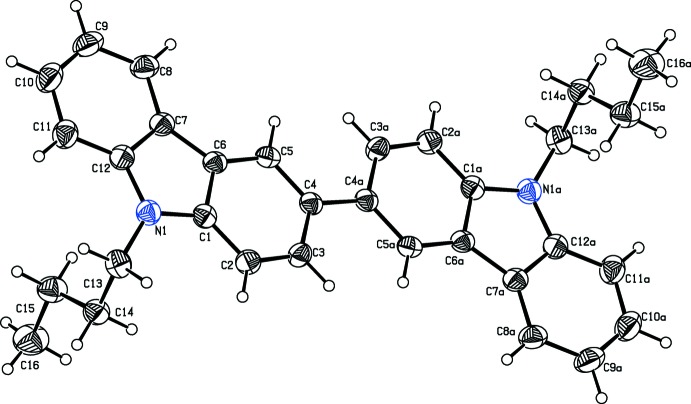Crystal structure of 9-butyl-3-(9-butyl-9H-carbazol-3-yl)-9H-carbazole.
IF 0.9
Acta crystallographica. Section E, Structure reports online
Pub Date : 2014-11-21
eCollection Date: 2014-12-01
DOI:10.1107/S1600536814025367
引用次数: 0
Abstract
In the title carbazole derivative, C32H32N2, the mol-ecule resides on a crystallographic twofold axis, which runs through the central C-C bond. The carbazole ring system is almost planar, with a maximum deviation of 0.041 (1) Å for one of the ring-junction C atoms. The crystal packing is stabilized by C-H⋯π inter-actions only, which form a C(7) chain-like arrangement along [110] in the unit cell.



9-丁基-3-(9-丁基- 9h -咔唑-3-基)- 9h -咔唑的晶体结构。
在标题咔唑衍生物C32H32N2中,分子位于晶体双轴上,该双轴穿过中心的C-C键。咔唑环系几乎是平面的,其中一个环结C原子的最大偏差为0.041 (1)Å。晶体填料仅通过C- h⋯π相互作用来稳定,这些相互作用在单元胞中沿[110]形成C(7)链状排列。
本文章由计算机程序翻译,如有差异,请以英文原文为准。
求助全文
约1分钟内获得全文
求助全文
来源期刊
自引率
33.30%
发文量
0
审稿时长
1.3 months
期刊介绍:
Acta Crystallographica Section E: Structure Reports Online is the IUCr highly popular open-access structural journal. It provides a simple and easily accessible publication mechanism for the growing number of inorganic, metal-organic and organic crystal structure determinations. The electronic submission, validation, refereeing and publication facilities of the journal ensure very rapid and high-quality publication, whilst key indicators and validation reports provide measures of structural reliability. In 2009, the journal published over 4000 structures. The average publication time is less than one month.

 求助内容:
求助内容: 应助结果提醒方式:
应助结果提醒方式:


